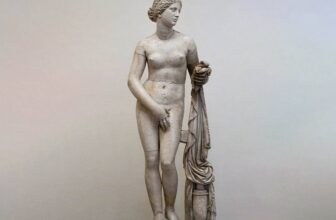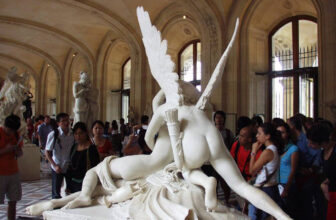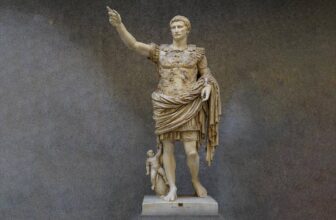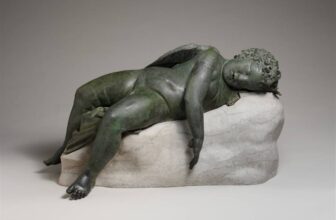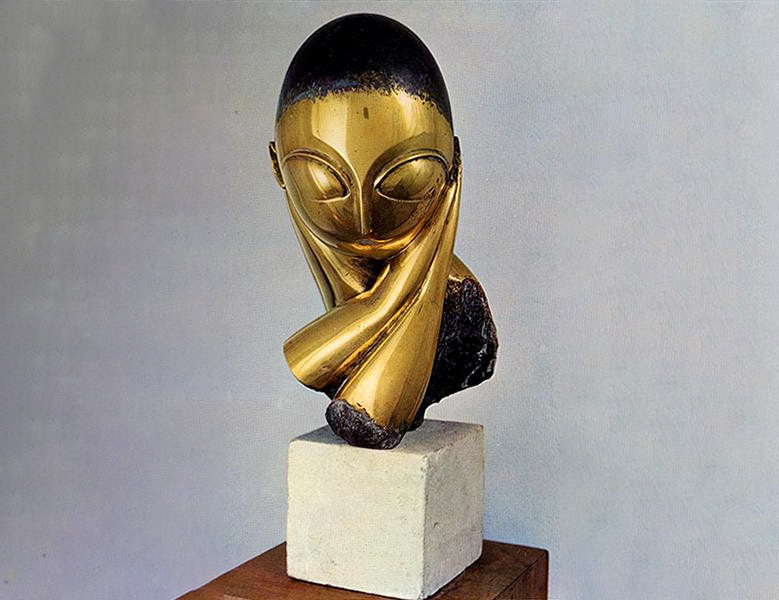
What Was Constantin Brancuși Known For
In the secretly village of Hobița, Romania, nestled at the foot of the Carpathian Mountains, a boy named Constantin Brancuși was born in 1876. Few could have predicted that this child, raised among shepherds and craftsmen, would go on to revolutionize modern sculpture and redefine the very essence of form and expression. Yet that is precisely what Brancuși did, through a remarkable life of devotion to art, minimalism, and truth to materials, he became one of the most influential sculptors of the 20th century.
This is not just a biography; it is a journey into the mind, methods, masterpieces, and monumental legacy of Constantin Brancuși, an artist who reshaped modernism with tools as simple as wood, stone, and bronze, and a vision as profound as eternity.
Constantin Brancuși was known for his radical departure from traditional sculpture. At a time when European art was still dominated by realism and ornate detail, Brancuși dared to simplify. He believed that art should reveal the essence of things, not their surface details. This pursuit of essential forms led him to create sculptures that were not literal representations but poetic abstractions.
He is most famous for his use of minimal, clean lines, and for stripping away extraneous detail to capture the spiritual core of his subjects. This method was not merely aesthetic; it was philosophical. Brancuși once said, “Simplicity is not an objective in art, but one achieves simplicity despite one’s self by entering into the real sense of things.”
While critics and artists alike struggled to understand his abstractions at first, Brancuși’s work became synonymous with a new kind of modernism, one rooted in purity, transcendence, and universal beauty.
How Did Brancuși Create His Artworks?
Brancuși’s process was both physically demanding and spiritually immersive. Unlike many sculptors who employed assistants to do much of the labor, Brancuși insisted on carving, shaping, and polishing each of his sculptures himself. He treated his studio as a sacred space, a place of experimentation, solitude, and communion with material.
His method was deeply intuitive. Starting often with rough sketches or small maquettes, he would then choose a material, wood, marble, stone, or bronze, and begin shaping it by hand. He did not work from detailed plans; instead, he let the material and form guide him. “Things are not difficult to make,” he said. “What is difficult is to put ourselves in the state of mind to make them.”
The final stages of Brancuși’s process involved highly refined polishing techniques, particularly for his bronze works. This polishing was not just about achieving a smooth surface but creating a mirror-like finish that invited contemplation. The reflection was symbolic, a merging of viewer and object, spirit and matter.
Brancuși’s Artistic Style and Influences
Brancuși is widely associated with Modernism, but more specifically, he is considered a pioneer of abstract and minimalist sculpture. His style is rooted in primitivism, Eastern philosophy, and Romanian folk art. These diverse influences merged into a unique sculptural language characterized by:
Abstraction: Moving away from literal representation to symbolic and geometric forms.
Minimalism: Reducing subjects to their essence.
Spirituality: Infusing his works with a sense of the sacred.
Natural Materials: Emphasizing wood, stone, and bronze in their most honest forms.
While many artists sought complexity in their creations, Brancuși sought purity. This purity would influence generations of artists, from Henry Moore to Isamu Noguchi, and continues to resonate in contemporary art today.
The Materials of Eternity: What Did Brancuși Use?
Brancuși believed that each material had its own soul. He once stated, “When you see a tree, the materials are not merely wood. They are life, strength, growth, rootedness.” In his hands, materials were never passive; they were collaborators in the creative act.
He frequently used:
Marble – for its luminous, almost flesh-like quality. Brancuși would spend months polishing a single piece until it glowed.
Bronze – particularly for pieces like Bird in Space, where the metal’s reflective surface became part of the sculpture’s message.
Wood – often Romanian oak, carved into totemic shapes inspired by traditional folk art.
Limestone and stone – rugged, textured, and grounding, often used in early works or architectural pieces.
His reverence for these materials was tied to his belief in truth in form, the idea that a sculpture should reveal rather than obscure the natural character of its medium.
Among Brancuși’s prolific body of work, a few pieces stand out not only for their beauty but for their lasting cultural impact.
1. Bird in Space (1923–1940)
A sleek, elongated bronze sculpture that captures the essence of flight rather than a literal bird. The piece caused a sensation when it was brought to the United States, famously leading to a legal case in 1926 when customs officials refused to classify it as “art” because it didn’t resemble a bird.
Today, Bird in Space is considered a seminal piece in the history of modern sculpture, an embodiment of movement, purity, and transcendence.
2. The Endless Column (1938)
Located in Targu Jiu, Romania, this towering structure (over 98 feet high) is composed of stacked rhomboidal modules. It symbolizes infinity, the infinite sacrifice of the Romanian soldiers commemorated by it, and the continuity of life.
It’s not just a sculpture, it’s a monument, a spiritual axis, a vertical bridge between earth and sky.
3. Sleeping Muse (1908–1910)
A simplified bronze or marble head of a sleeping woman, this piece shows Brancuși’s mastery of form. The egg-like shape and closed eyes suggest dreams, introspection, and peace.
4. Mademoiselle Pogany (1912)
A portrait of a Hungarian pianist, this stylized, almost otherworldly sculpture became an iconic example of Brancuși’s synthesis of human emotion and abstract form.
These pieces were not just sculptures, they were meditations in material, conveying profound philosophical and emotional themes with astonishing economy of form.
How Many Artworks Did Brancuși Create?
While the exact number is debated, Brancuși is believed to have created around 215 sculptures during his lifetime, along with over 1,600 photographs and numerous drawings and sketches.
His studio in Paris (which he bequeathed to the French state upon his death) was filled with works in various stages of completion, many of which never left his workspace during his lifetime. He saw the studio itself as a complete work of art, carefully arranging pieces to converse with one another in the space.
This relatively modest output is a testament to Brancuși’s perfectionism and meditative pace. Each piece was the product of long contemplation, countless refinements, and a deep personal connection.
Where Is Brancuși’s Artwork Located Today?
Brancuși’s legacy lives on in museums, public monuments, and collections across the world. Some of the most notable locations include:
1. Centre Pompidou (Paris, France)
The French government honored Brancuși’s wishes and reconstructed his original studio next to the Centre Pompidou. The Atelier Brancuși offers an immersive experience into his creative environment, with original tools, sculptures, and workbenches.
2. The Museum of Modern Art (New York, USA)
MoMA holds several of Brancuși’s major works, including versions of Bird in Space and Sleeping Muse, making it one of the most important Brancuși collections in North America.
3. The Philadelphia Museum of Art (USA)
Home to a stunning collection of Brancuși sculptures, including a bronze Mlle Pogany and The Kiss.
4. Targu Jiu Sculpture Ensemble (Romania)
Brancuși’s only large-scale public monument, this ensemble includes The Endless Column, The Table of Silence, and The Gate of the Kiss. It is a pilgrimage site for art lovers and one of the most important cultural landmarks in Romania.
5. Guggenheim Museum (New York, USA) and Tate Modern (London, UK)
These institutions frequently exhibit Brancuși’s works and explore his legacy in modernist and contemporary contexts.
How Much Does a Brancuși Artwork Cost?
Brancuși’s sculptures are among the most expensive and sought-after artworks in the world. Given their rarity, historical significance, and artistic impact, they command prices that reflect their stature.
In 2017, a version of La Jeune Fille Sophistiquée (Portrait of Nancy Cunard), a polished bronze sculpture, sold at Christie’s for over $71 million, making it one of the most expensive sculptures ever sold at auction.
Other pieces regularly sell in the tens of millions of dollars, depending on provenance, condition, and medium. However, most of Brancuși’s key works are now in museum collections and are unlikely to re-enter the private market.
Constantin Brancuși Legacy and Influence
Brancuși’s influence cannot be overstated. He laid the groundwork for modern sculpture and challenged generations of artists to think beyond representation. His spiritual, symbolic approach bridged Western modernism with Eastern mysticism and Romanian folklore, offering a timeless visual language that still speaks to viewers today.
His legacy also lives in the many artists he inspired, Barbara Hepworth, Isamu Noguchi, Henry Moore, and countless others who credit Brancuși with liberating sculpture from the confines of realism.
The Sculptor of the Soul
Constantin Brancuși was not just a sculptor, he was a philosopher of form, a poet of matter, and a visionary who saw the soul in stone and bronze. His art, though minimal in appearance, is maximal in meaning. It reaches across cultures, centuries, and continents to touch something eternal within us.
In a world that often prizes complexity, Brancuși reminds us of the power of simplicity, and that true beauty lies not in what we add, but in what we reveal.
“What is real is not the external form, but the essence of things.”
, Constantin Brancuși image/wikiart.org
